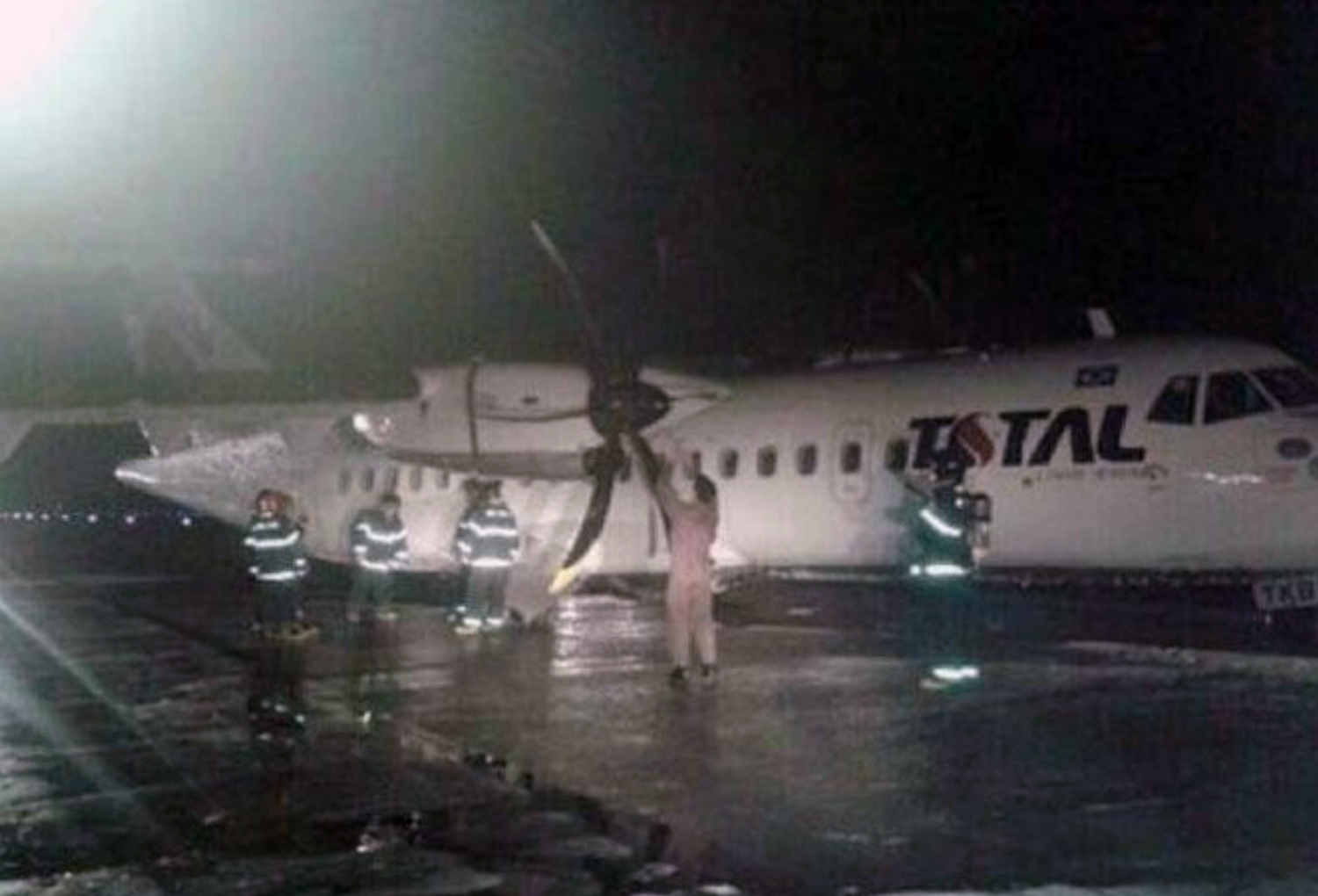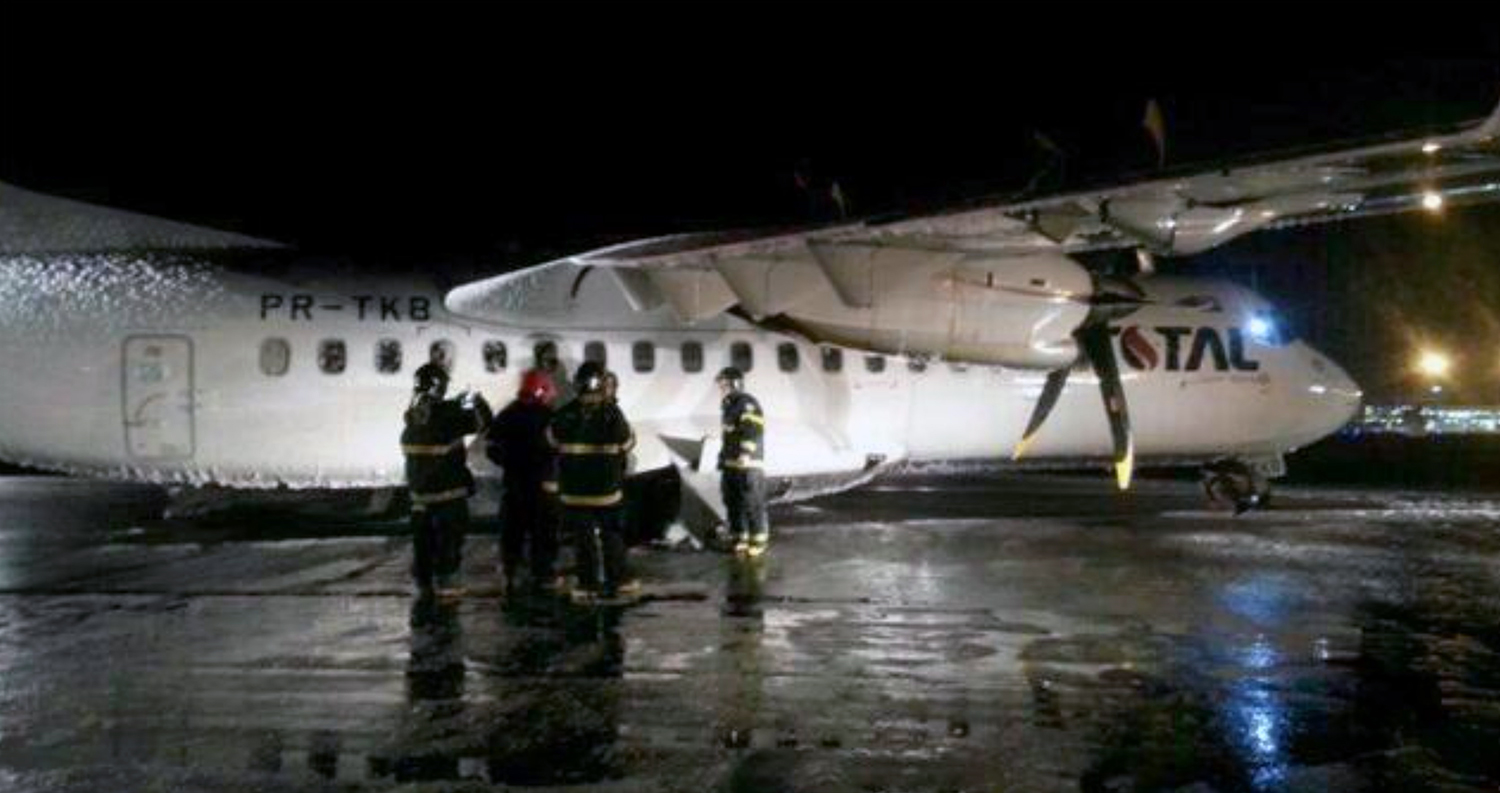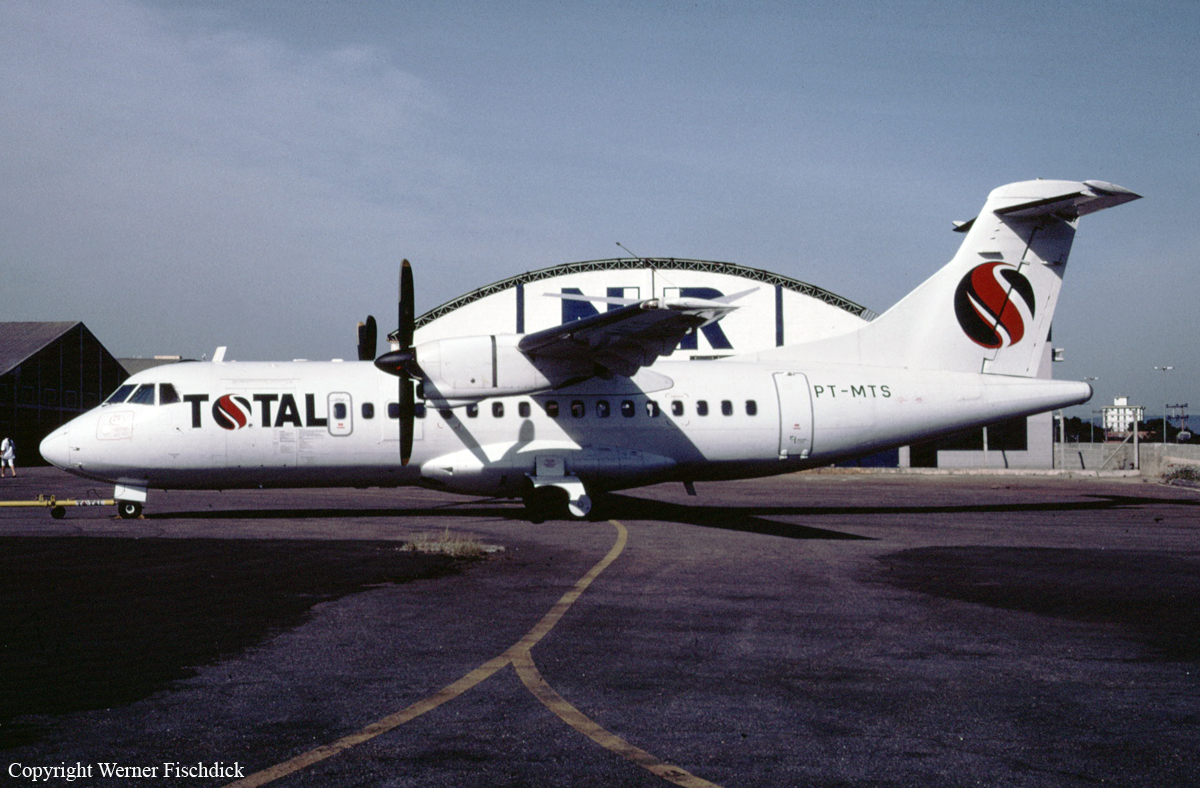Crash of an ATR42-500 in Coari
Date & Time:
May 30, 2014 at 2055 LT
Registration:
PR-TKB
Survivors:
Yes
Schedule:
Coari - Manaus
MSN:
610
YOM:
2000
Crew on board:
4
Crew fatalities:
Pax on board:
45
Pax fatalities:
Other fatalities:
Total fatalities:
0
Captain / Total hours on type:
2601.00
Copilot / Total hours on type:
548
Circumstances:
During the takeoff roll from Coari-Urucu Airport by night, the aircraft collided with a tapir that struck the right main gear. The crew continued the takeoff procedure and the flight to Manaus. After two hours and burning fuel, the aircraft landed at Manaus-Eduardo Gomes Airport. Upon touchdown, the right main gear collapsed and the aircraft veered to the right and came to rest. All 49 occupants evacuated safely while the aircraft was damaged beyond repair.
Probable cause:
Collision with a tapir during takeoff, causing severe damages to the right main gear.
The following findings were identified:
- The lack of isolation of the operational area allowed the land animal to enter the runway for landings and takeoffs, contributing to the accident.
- The crew did not notice the presence of the land animal on the runway early enough to abort the takeoff without extrapolating the runway limits and avoiding collision.
- The presence of the land animal (Tapirus terrestris) interfered with the operation and led to the collision of the right main landing gear.
The following findings were identified:
- The lack of isolation of the operational area allowed the land animal to enter the runway for landings and takeoffs, contributing to the accident.
- The crew did not notice the presence of the land animal on the runway early enough to abort the takeoff without extrapolating the runway limits and avoiding collision.
- The presence of the land animal (Tapirus terrestris) interfered with the operation and led to the collision of the right main landing gear.
Final Report:




